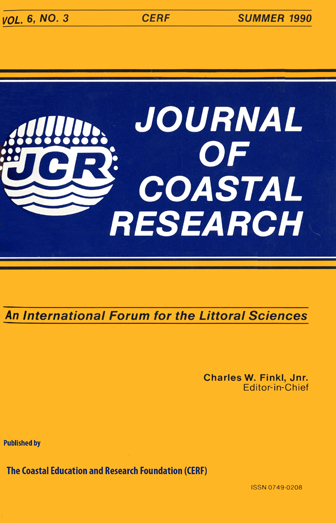The Effects of a Mid-Foreshore Groundwater Effluent Zone on Tidal-Cycle Sediment Distribution in Puget Sound, Washington
Keywords:
Fluorescent tracer study, fresh-water outflow, Puget Sound, surf zone, swash-backwash zoneAbstract
Standard fluorescent tracer techniques used on beaches with mid-foreshore groundwater effluent zones show a detailed pattern of tidal-cycle sedimentation. Tracer particle distribution on three beaches with wave heights commonly less than 35 cm suggests that the influence of the foreshore slope and average grain size of the beach is more important on swash and backwash transport velocities than the influence of the high water table. The effect of the effluent zone on tidal-cycle sedimentation is only significant near the beginning and end of the tidal-cycle when outflow rates and, consequently, backwash velocities are greatest. During the rest of the tidal- cycle, swash deposition and swash erosion control sediment distribution. Beaches with coarser sediment and steeper foreshore slopes will have narrower surf zones, resulting in greater swash velocities and enhanced landward deposition of sediment. At high tide this effect is especially pronounced due to the steeper gradient of the upper foreshore.


